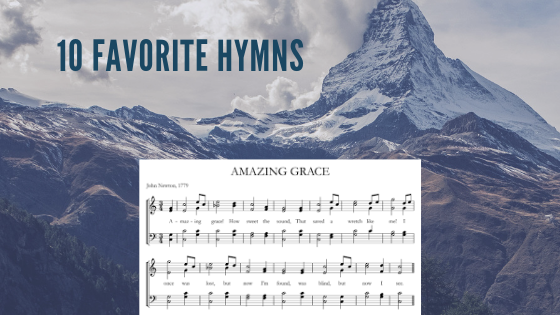Ten Favorite Hymns
Scale the heights (and depths) of some classics with these 10 favorite hymns
Great songs have a story to tell, with a power to transport us to heights of joy and through valleys of sorrows. This specially true of many of the old hymns.As Marcus Jones, Digital Content Manager at Premier Christian Communications notes, “…hymns have backstories, some of which are truly amazing.The writer of ‘It Is well’, Horatio Spafford, lost his business in the Great Chicago fire and his four daughters died at sea travelling to England. Using all of that tragedy, he penned a hymn that is still regularly sung today due to its reassuring lyricism. It is this heartfelt cry, alongside sound doctrine, that make hymns extremely powerful.”Recognizing this truth, many artists and churches are turning back to the richness of the hymns, sometimes re-working the tunes or tempo to breathe some freshness into the arrangements. See this collection of modernized hymns.On that note, here’s ten classics also worth re-visiting, or maybe checking out for the very first time:
- Amazing Grace – It’s been said that you don’t appreciate the rescue until you feel the greatness of your need. Former slave-trader John Newton wrote this after a violent storm battered his vessel off the coast Ireland in 1748, so severely that he called out to God for mercy – the moment that marked his spiritual conversion.
- Crown Him with Many Crowns – This 1851 hymn with lyrics by Matthew Bridges and Godfrey Thring has some of the most beautiful lines of any hymns: “Behold his hands and side – rich wounds, yet visible above, in beauty glorified: no angel in the sky, can fully bear that sight, but downward bends his burning eye at mysteries so bright!” Drawn from verses like 2 Tim. 4:8 where believers are promised a “crown of righteousness” from the Lord, the imagery here is that they promptly cast them at the feet of Jesus to honor him who saved them by his cross and resurrection.
- A Mighty Fortress is Our God – Often referred to as “The Battle Hymn of the Reformation” and written by its chief spokesman, Martin Luther, this hymn uses the image of a fortified castle or ‘bulwark’ to evoke the power of God’s character and promises in the Gospel – a power that transcends all attempts to undo it, even death.
- Rock of Ages Cleft for Me – Reverend Augustus Toplady is said to have been traveling along a gorge in Burrington Combe, England in 1762, when a fierce tempest arose. He sought shelter beneath a massive stone, in a “cleft” – symbolizing the protection of Christ, “The Rock,” and penned these words.
- Blessed Assurance – Blind hymnwriter Fanny Crosby penned this hymn in 1873, as an expression of the incomparable comfort and confidence that the Gospel brings. This great gift of grace produces a “walking by faith instead of sight,” and a “foretaste of glory divine!”
- To God be the Glory – Another great Fanny Crosby hymn, it first caught on in Great Britain when Ira Sankey introduced it there during Moody’s 1873-1874 evangelistic campaigns. Despite this, the hymn was included in very few hymnals, but eventually saw a “revival” in 1954 when Cliff Barrows, song leader for Billy Graham, added it to the song book for the London Crusade. It turns out this was a perfect choice, as the hymn beautifully expresses God’s glory revealed in the wonders of grace: O perfect redemption, the purchase of blood, To every believer the promise of God; The vilest offender who truly believes, That moment from Jesus a pardon receives.
- And Can It Be – Charles Wesley wrote this hymn in 1738 to celebrate his conversion. Drawing a parallel to Peter’s experience in the New Testament, Wesley exulted: ‘My chains fell off, my heart was free/I rose, went forth, and followed thee.’
- Great is Thy Faithfulness – Thomas Chisholm penned this in 1923, utilizing the phrase “great is thy faithfulness” from the Book of Lamentations (3:23) to celebrate God’s faithfulness over his lifetime. Since that time many believers have drawn comfort from lines like: “… there is no shadow of turning with Thee; Thou changest not, Thy compassions they fail not, as Thou hast been, Thou forever wilt be.”
- Nothing but the Blood – Written by Robert Lowry in 1876, this hymn powerfully asks ‘What Can Wash Away’ the stain of my sin? As the refrain makes clear, only Jesus’ blood has this cleansing power, and and only Jesus gives his imputed righteousness to us, received by faith. The scriptural foundation for this song might be found in Hebrews 9:22, which reads, “without the shedding of blood there is no remission of sin.”
- Come Thou Fount – Written in 1758 by Robert Robinson, this great hymn flowed out of Robinson not long after his conversion at a George Whitefield Sermon. Regarding our worship, the hymn reminds us that “…streams of mercy, never ceasing, call for songs of loudest praise.”


